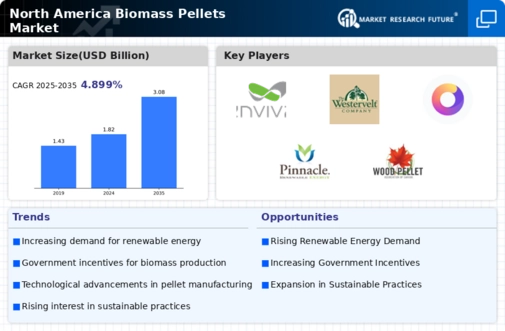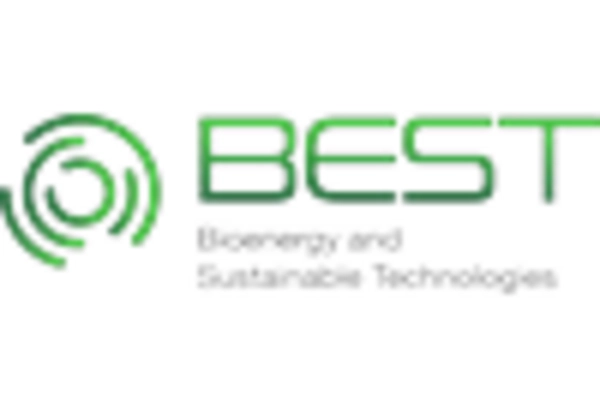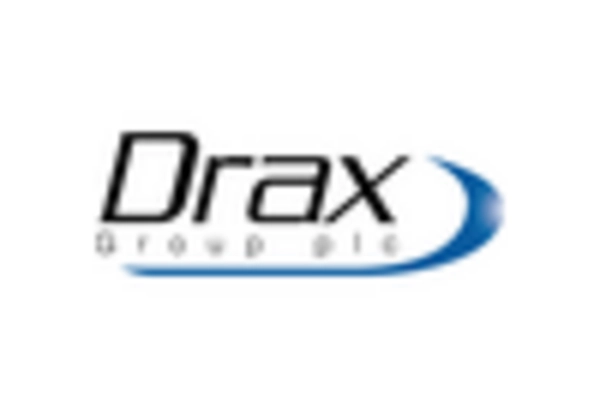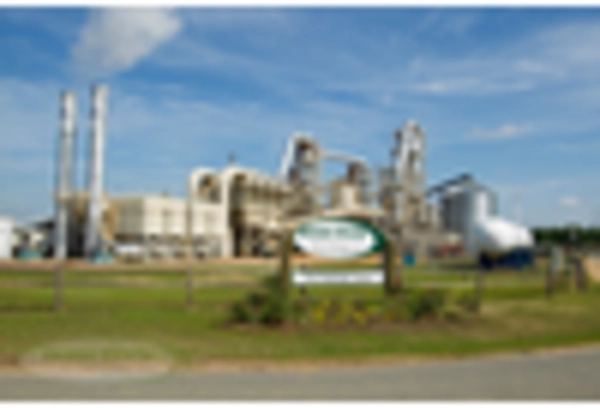Increasing Industrial Applications
The biomass pellets market in North America is experiencing growth due to the rising adoption of biomass pellets in various industrial applications. Industries such as manufacturing, food processing, and power generation are increasingly utilizing biomass pellets as a sustainable energy source. The transition towards cleaner energy solutions is prompting companies to seek alternatives to traditional fossil fuels. For example, the power generation sector is projected to see a shift, with biomass accounting for nearly 10% of the energy mix by 2030. This trend indicates a growing recognition of biomass pellets as a reliable and efficient energy source, thereby driving demand in the biomass pellets market.
Regulatory Support for Renewable Resources
The biomass pellets market in North America benefits from robust regulatory frameworks that promote renewable energy sources. Governments at both federal and state levels have implemented policies that incentivize the use of biomass for energy production. For instance, the Renewable Fuel Standard (RFS) mandates a certain volume of renewable fuels, including biomass pellets, to be blended into the fuel supply. This regulatory support not only encourages investment in biomass production facilities but also enhances market stability. As a result, the The market is projected to grow., with an expected increase in production capacity by approximately 15% over the next five years. Such policies are crucial in driving the adoption of biomass pellets as a viable alternative to fossil fuels.
Economic Incentives for Biomass Utilization
Economic incentives are a driving force behind the growth of the biomass pellets market in North America. Various financial mechanisms, such as tax credits, grants, and subsidies, are being offered to encourage the production and use of biomass pellets. These incentives lower the financial barriers for producers and consumers alike, making biomass a more attractive option compared to conventional energy sources. For instance, the federal government has allocated over $200 million in grants to support biomass energy projects in recent years. Such economic support is likely to stimulate investment in the biomass pellets market, fostering innovation and expanding production capabilities.
Rising Consumer Awareness of Sustainability
Consumer awareness regarding environmental sustainability is a significant driver for the biomass pellets market in North America. As individuals and businesses become more conscious of their carbon footprints, there is a growing preference for renewable energy sources. This shift in consumer behavior is influencing purchasing decisions, with many opting for products that utilize biomass pellets. Surveys indicate that approximately 70% of consumers are willing to pay a premium for sustainable energy solutions. This heightened awareness is likely to propel the biomass pellets market forward, as more consumers advocate for cleaner energy alternatives and support companies that prioritize sustainability.
Technological Advancements in Production Processes
Technological advancements are playing a pivotal role in enhancing the efficiency of biomass pellets production in North America. Innovations in processing technologies, such as improved pellet mills and drying techniques, are enabling manufacturers to produce higher-quality pellets at lower costs. These advancements not only increase production capacity but also reduce waste and energy consumption during the manufacturing process. As a result, the The market is expected to witness a growth rate. of around 12% annually over the next five years. The continuous evolution of production technologies is crucial for meeting the rising demand for biomass pellets and ensuring competitiveness in the energy market.


















Leave a Comment